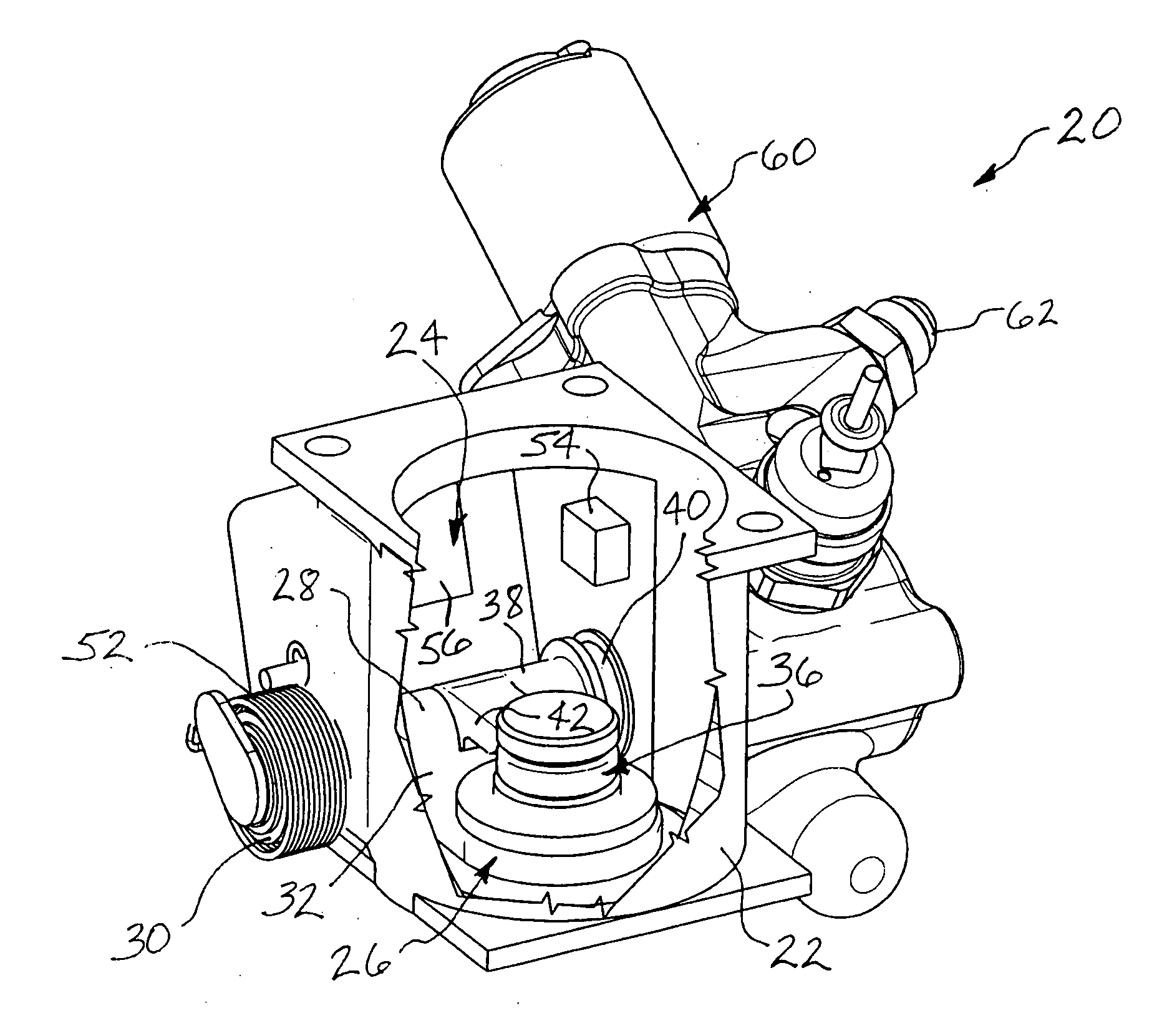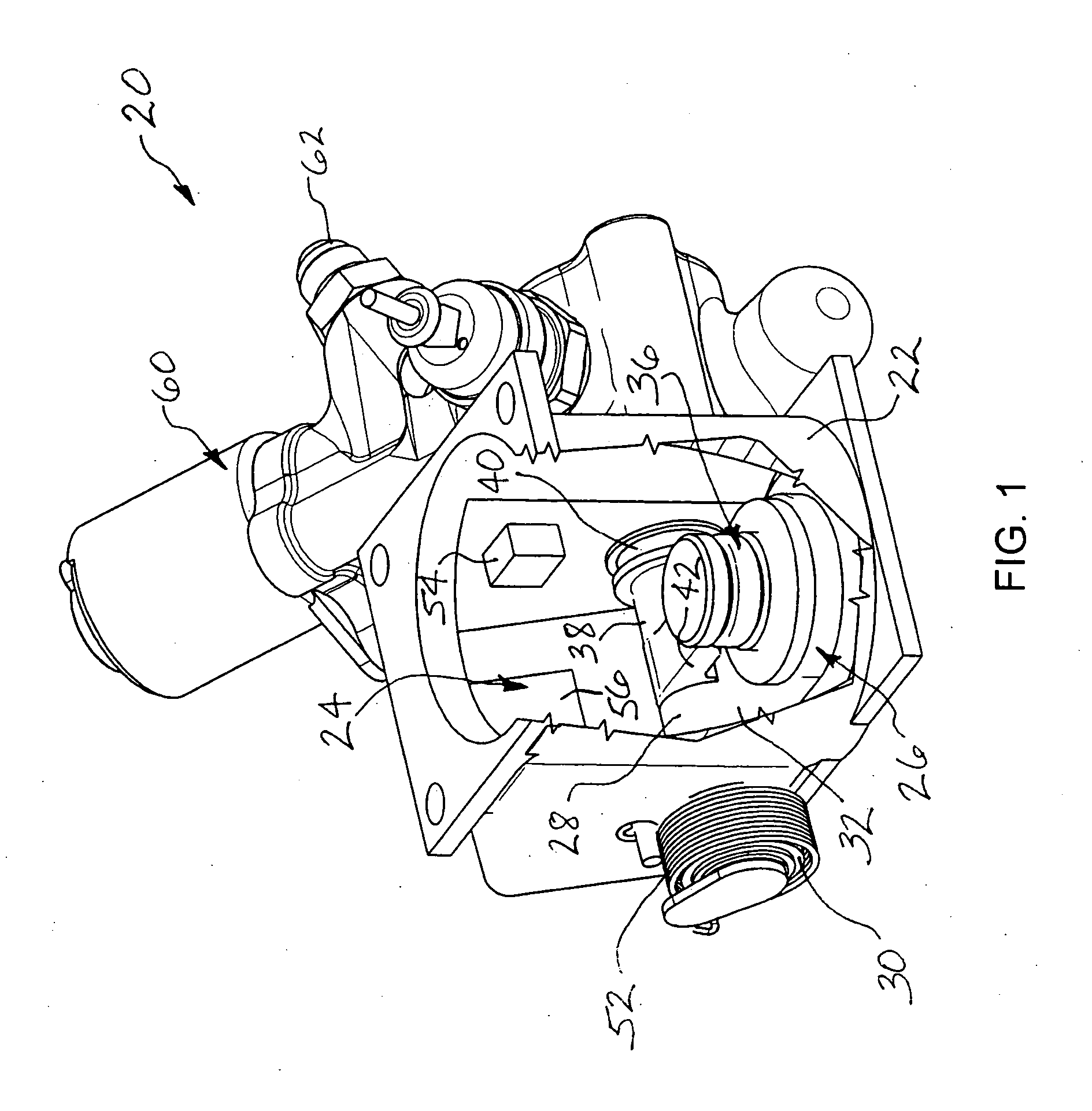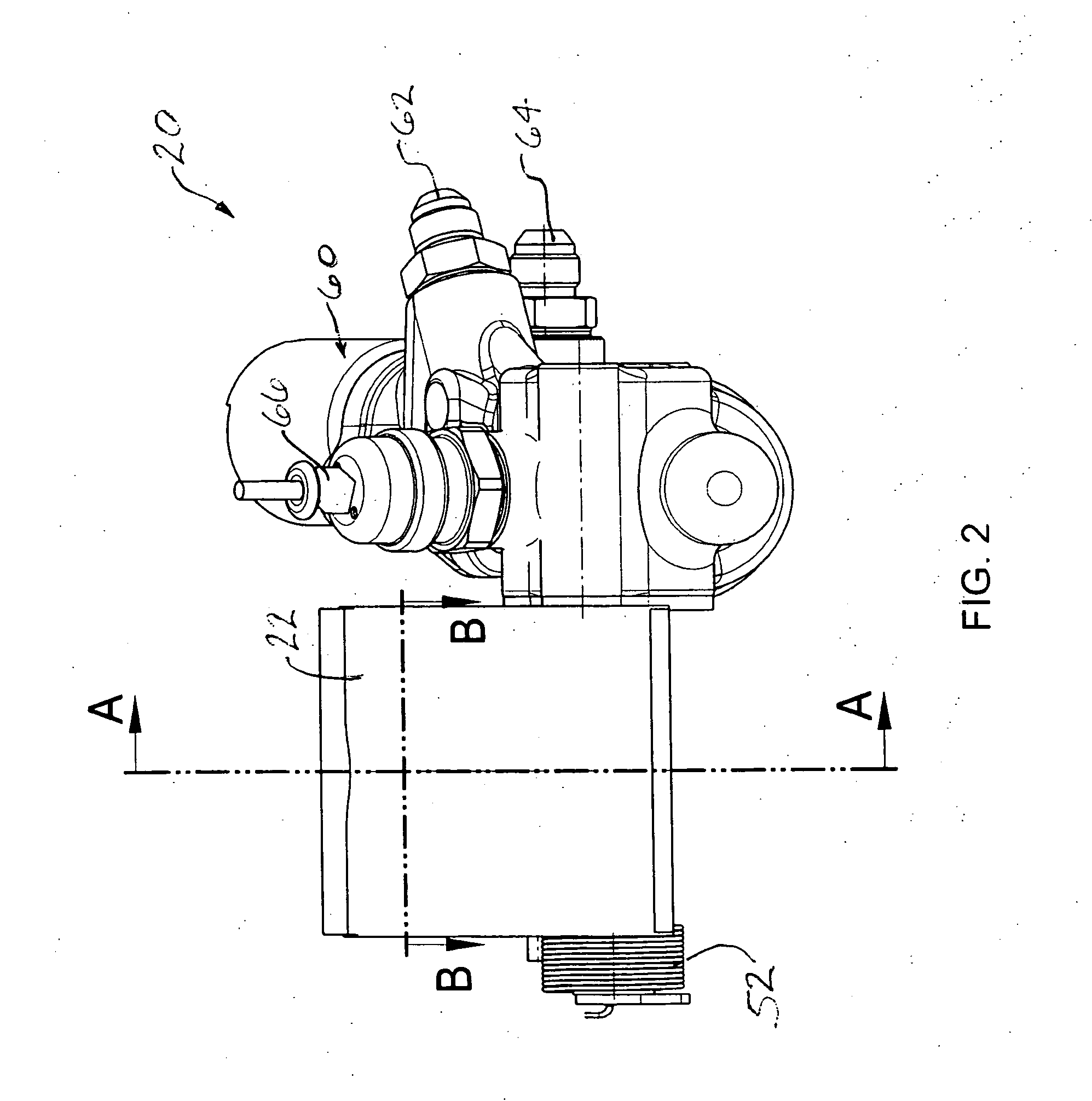Swing valve for a turbocharger with stacked valve members, and two-stage turbocharger system incorporating same
a turbocharger and valve member technology, applied in the field of turbochargers, can solve the problems of difficult modulation of flow control, single poppet not providing the ability to regulate, and the complexity of turbocharger systems for diesel engines in particular, and achieve the effect of facilitating compactness
- Summary
- Abstract
- Description
- Claims
- Application Information
AI Technical Summary
Benefits of technology
Problems solved by technology
Method used
Image
Examples
second embodiment
[0031] The primary valve member 26 pivots between a closed position (FIGS. 1, 5, and 6) in which the primary valve member blocks the primary valve passage 24 (except that, as further described below, a relatively small amount of flow can occur via the secondary valve passage and valve member), and an open position (FIGS. 3, 4, and 7) in which the primary valve member does not present any significant obstacle to the flow of gas through the primary valve passage. In the closed position, the primary valve member 26 engages a primary valve seat (not shown in this embodiment, but illustrated in FIGS. 9-12) to seal the primary valve member so that flow is substantially prevented from flowing between the primary valve member and the seat. The primary valve seat either can be disposed within the valve housing 22 (e.g., integrally formed in the valve housing, or separately formed and then installed in the valve housing), or alternatively can be part of another component (not shown) that is a...
first embodiment
[0042] A swing valve 120 in accordance with another embodiment of the invention is illustrated (without any actuator) in FIGS. 9-13. The valve includes a valve housing 122 defining a primary valve passage 124, a primary valve member 126 affixed to a primary shaft 128, and a secondary valve member 136 affixed to a secondary shaft 138. The valve housing 122 defines a primary valve seat 123 that the primary valve member 126 engages in its closed position as shown in FIGS. 11 and 12. This is the primary difference relative to the first valve 20, in which the primary valve seat is provided in another component coupled with the valve 20. In other respects, the valve 120 is generally similar to the first embodiment above.
[0043] The secondary valve member 136 engages a secondary valve seat 150 formed on the primary valve member 126 in the closed position (FIG. 11). In this condition, the valve 120 is fully closed. Partial opening is achieved by rotating the secondary shaft 138 to open the s...
PUM
 Login to View More
Login to View More Abstract
Description
Claims
Application Information
 Login to View More
Login to View More - Generate Ideas
- Intellectual Property
- Life Sciences
- Materials
- Tech Scout
- Unparalleled Data Quality
- Higher Quality Content
- 60% Fewer Hallucinations
Browse by: Latest US Patents, China's latest patents, Technical Efficacy Thesaurus, Application Domain, Technology Topic, Popular Technical Reports.
© 2025 PatSnap. All rights reserved.Legal|Privacy policy|Modern Slavery Act Transparency Statement|Sitemap|About US| Contact US: help@patsnap.com



